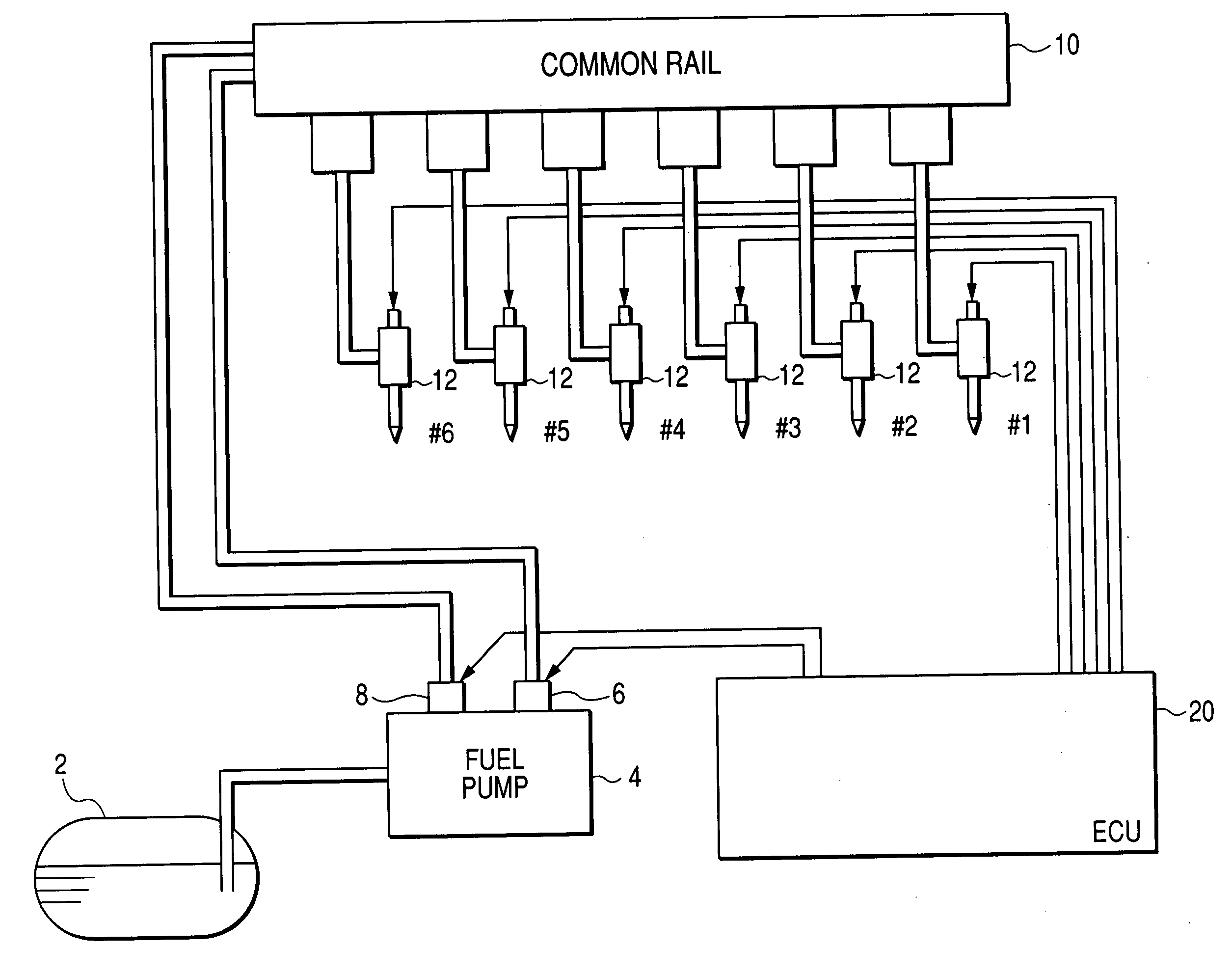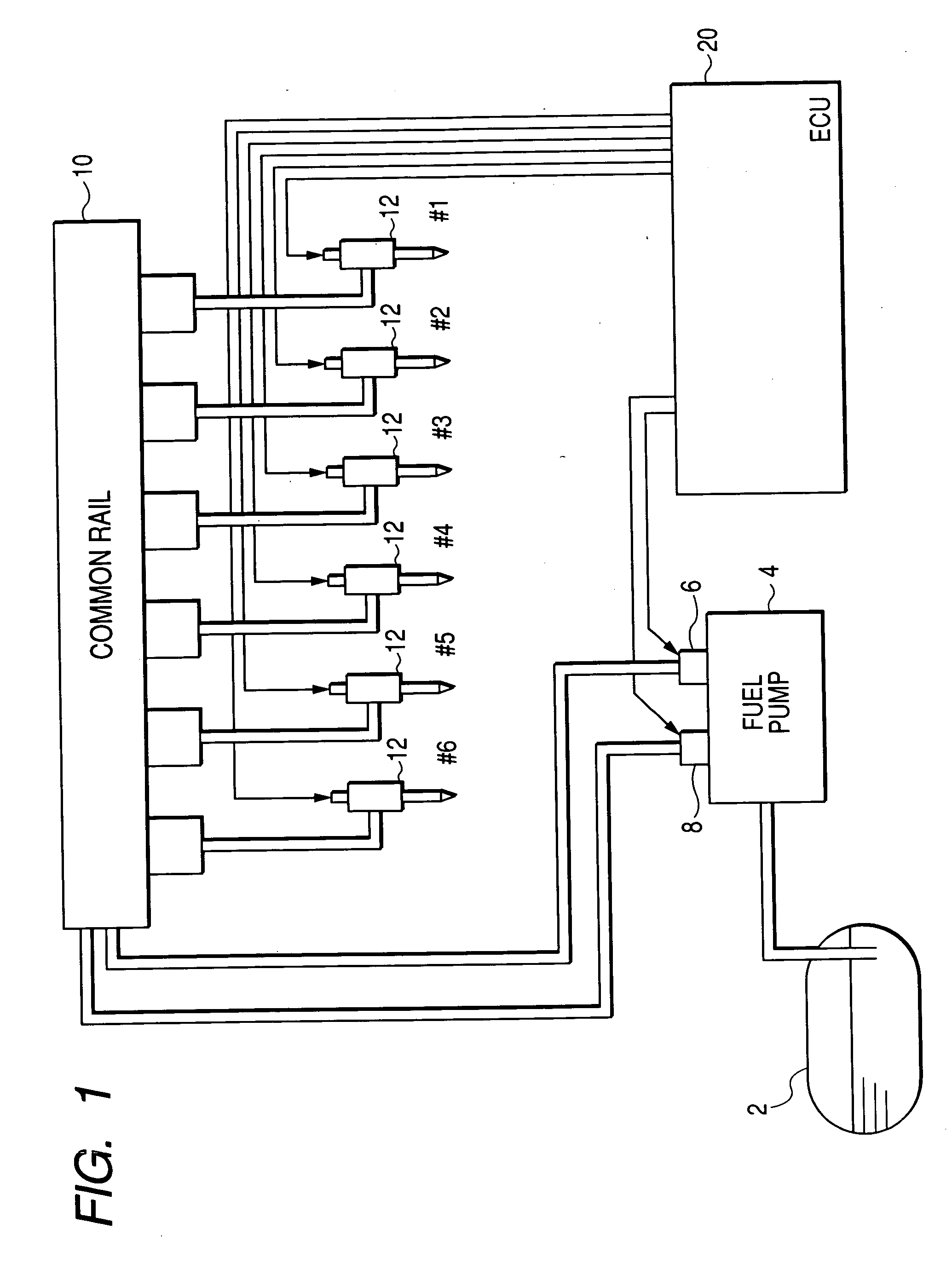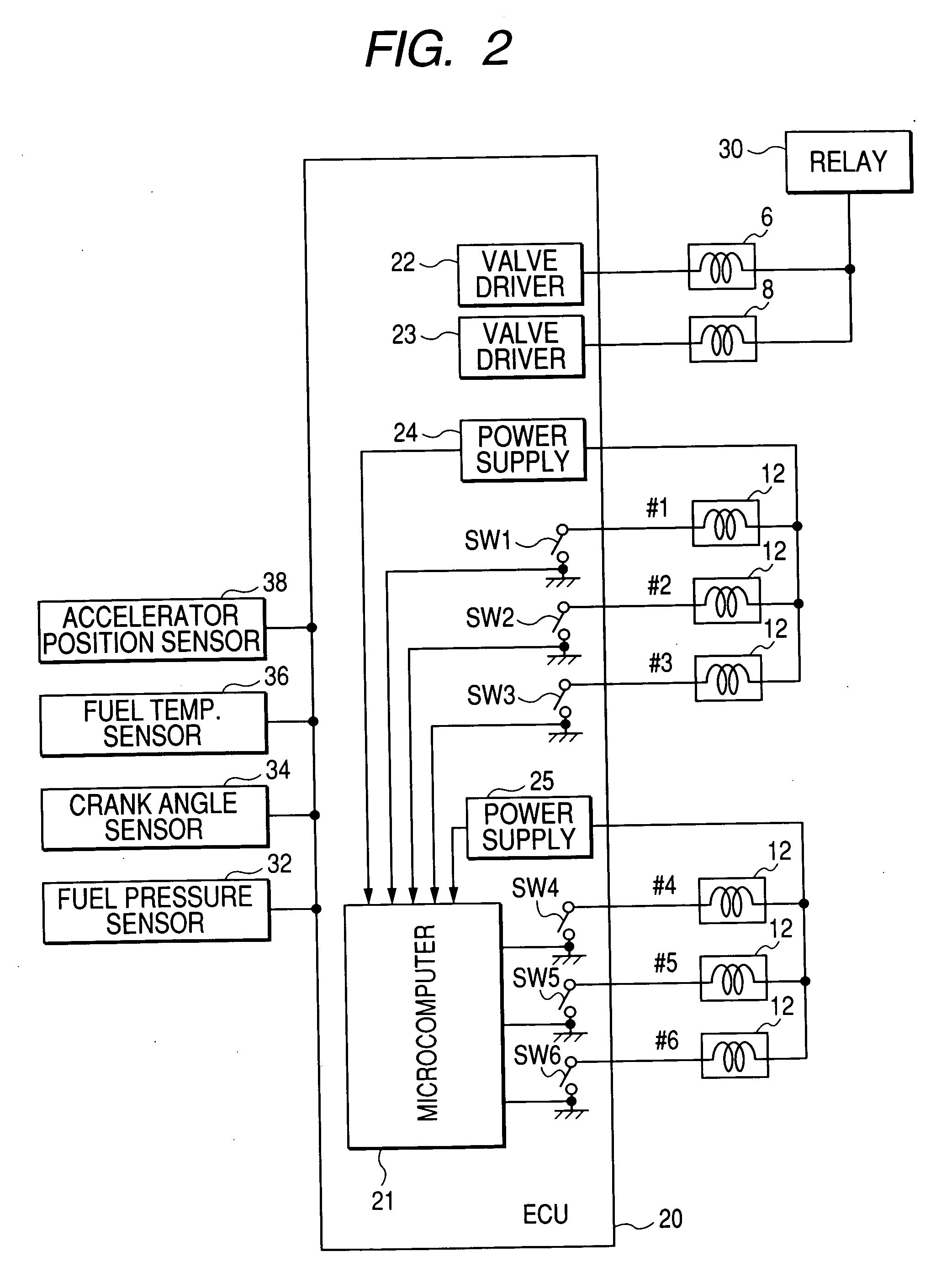Fuel injection control system ensuring steady balance in pressure in accumulator
a control system and fuel injection technology, applied in the direction of electric control, fuel injection apparatus, charge feed system, etc., can solve the problems of reducing the controllability of the pressure increasing the variation in the pressure of the fuel in the common rail, and unbalance between the amount of fuel flowing into and out of the common rail, so as to ensure the controllability of the pressure of the fuel in the accumulator
- Summary
- Abstract
- Description
- Claims
- Application Information
AI Technical Summary
Benefits of technology
Problems solved by technology
Method used
Image
Examples
first embodiment
[0087] Referring to the drawings, wherein like reference numbers refer to like parts in several views, particularly to FIG. 1, there is shown an engine control system according to the invention which is designed, as an example, as a common rail injection system (also called an accumulator injection system) working to control injection of fuel into a diesel engine.
[0088] A fuel pump 4 works to pump fuel out of a fuel tank 2 and supply it to a common rail 10. The fuel pump 4 is equipped with a first and a second plunger (not shown) and a first and a second metering valve 6 and 8. Each of the first and second metering valves 6 and 8 is designed as a discharge control valve (also called a pump control valve) to control the amount of fuel sucked from the fuel tank 4 to be discharged to the common rail 10. Specifically, each of the first and second metering valves 6 and 8 is controlled by an electronic control unit (ECU) 20 to be opened during an interval in which a corresponding one of t...
second embodiment
[0111] The engine control system of the second embodiment will be described below which is designed to reduce the amount of fuel to a preselected value which is to be outputted from the first discharge control valve 6 or the second discharge control valve 8 which is associated with one of the first and second groups of the fuel injectors 12 determined by the microcomputer 21 to have failed to be opened.
[0112] FIGS. 8(a) to 8(g) demonstrates an example where the pressure in the common rail 10 is controlled in the fail-safe mode of the microcomputer 21 of the second embodiment. FIGS. 8(a) to 8(g) represent the same as in FIGS. 4(a) to 4(g).
[0113] In the illustrated example, a failure in energizing the fuel injector(s) 12 has occurred in the first group. The microcomputer 21 works to regulate the amount of fuel to be discharged from the first discharge control valve 6 to a value which is selected to be equivalent to a portion of the quantity of fuel flowing out of the common rail 10 e...
third embodiment
[0116] The engine control system of the third embodiment will be described below which is designed to perform a fail-safe program, as illustrated in FIG. 9, in a cycle.
[0117] After entering the program, the routine proceeds to step 30 wherein the fuel injectors 12 are diagnosed to monitor a failure in operation thereof in the same manner as described in FIG. 6. The routine proceeds to step 32 wherein it is determined whether a failure in energizing the fuel injector(s) 12 has occurred in the first group or not. If a YES answer is obtained meaning that any of the first group of the fuel injectors 12 has failed to be energized, then the routine proceeds to step 36 wherein a target amount of fuel to be discharged by the first discharge control valve 6 is determined based on the speed of the engine, the pressure of fuel in the common rail 10, and the temperature of the fuel in the common rail 10, as measured by the fuel pressure sensor 32, the crank angle sensor 34, and the fuel tempera...
PUM
 Login to View More
Login to View More Abstract
Description
Claims
Application Information
 Login to View More
Login to View More - R&D
- Intellectual Property
- Life Sciences
- Materials
- Tech Scout
- Unparalleled Data Quality
- Higher Quality Content
- 60% Fewer Hallucinations
Browse by: Latest US Patents, China's latest patents, Technical Efficacy Thesaurus, Application Domain, Technology Topic, Popular Technical Reports.
© 2025 PatSnap. All rights reserved.Legal|Privacy policy|Modern Slavery Act Transparency Statement|Sitemap|About US| Contact US: help@patsnap.com



